The making of Pirlo: “From an early age, I knew I was better than others”
Arrogant? Perhaps. Aloof? Yes. Adored by everybody? Absolutely. After another trophy-laden season for football’s last great luxury player, FourFourTwo discovers what made Andrea Pirlo calcio’s king of cool. Words: Andrew Murray (additional reporting by Alison Ratcliffe and Alberto Santi)
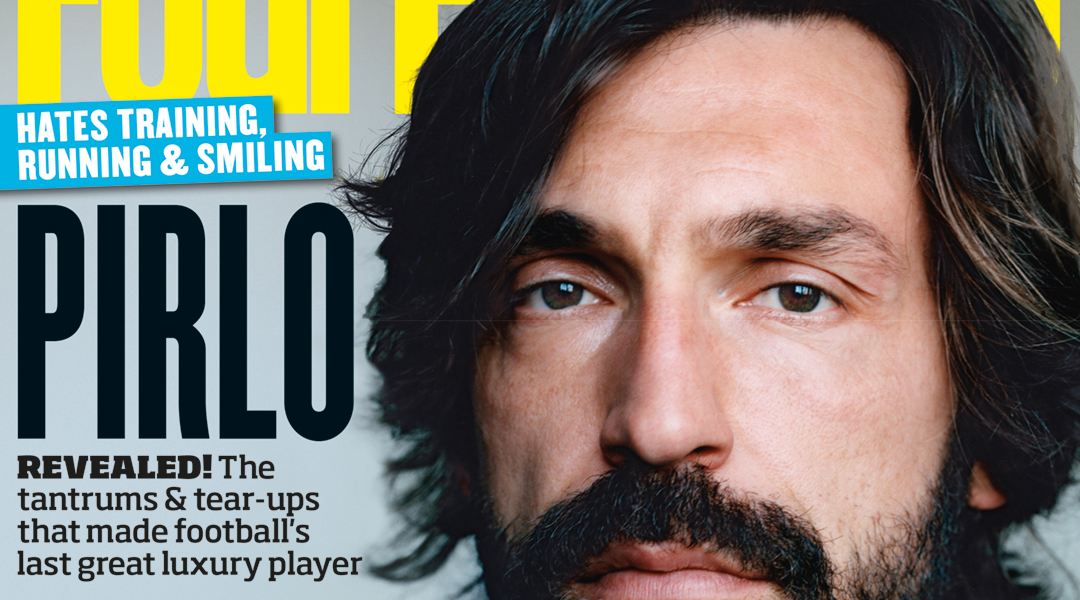
“When I see Andrea Pirlo play, when I see the ball at his feet, I ask myself if I can really be considered a footballer” – Gennaro Gattuso
Down the stairs, or the escalator for the impossibly lazy, come a dozen Juventus players. An hour before meeting Barcelona in the Champions League final, they traverse a small concrete valley before bounding up another set of steps and into the warm evening glow that illuminates Berlin’s Olympiastadion.
They emerge, to polite applause, and the group scatters. At its front, 22-year-old forward Alvaro Morata crosses himself before sprinting onto the pitch, changing direction every couple of strides to dissolve any nervous energy.
His strike partner Carlos Tevez, an ADHD footballer utterly incapable of even momentary stasis, follows suit. Another six break into a jog, swinging arms from side to side and performing a couple of stretches.
There is one of the dozen, however, who is yet to even reach a trot. His gaze – hidden behind a squinty stare and a shock of flowing brown hair – is fixed on a football about 20 paces onto the pitch. While his team-mates jog widths, scanning the crowd, he follows with the same ball at his feet. As the intensity increases under the gaze of fitness coach Simone Folletti, he stretches with a leaning shrug and sprints with a weary sigh, all the while hoping for another touch of the ball. Andrea Pirlo, you see, hates the warm-up.
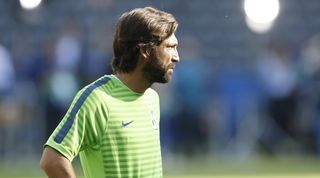
The warm-up is nothing but masturbation for conditioning coaches. I need to do something to avoid getting depressed.
“It actually disgusts me,” he wrote in his fascinating 2014 autobiography I Think Therefore I Play. “It’s nothing but masturbation for conditioning coaches. I need to do something to avoid getting depressed.
“If you’ve got Bar Refaeli [a stunning Israeli model] lying naked in front of you, you can’t just wink at her and say: ‘Wait there – I’ll be with you in 15 minutes.’ It’s exactly the same when you’re about to play Real Madrid, Barcelona or any other superpower.”
Get FourFourTwo Newsletter
The best features, fun and footballing quizzes, straight to your inbox every week.
It’s this sort of attitude that has enshrined the modern Pirlo cult. The Twitter-breaking tears shed as Juve lost 3-1 to Barcelona only add to the allure. His eminently quotable memoirs and that luscious beard may help – he looks naked in pre-facial hair pictures – but Pirlo is unique in 2015 football.
We all know what he’s won (the 2006 World Cup, those Champions League trophies in 2003 and 2007, six Serie A titles and various other trinkets too numerous to mention), but the relentless quest for silverware isn’t what matters. Nor does defeat in Berlin.
Now 36 years old, why does he matter? Fans and managers want multi-functional players. They want players like his Juventus midfield partner Paul Pogba; players who can do everything well, without necessarily excelling in one specific discipline. All Pirlo does is pass. He doesn’t run, can’t head the ball and isn’t particularly strong in the tackle.
In short: fantasy. Art first, result second. England definitively fell for Pirlo with his scooped Panenka penalty against Joe Hart in the Euro 2012 quarter-final shootout.
Yet he’d done it before, 20 years earlier, aged 13. The cult of Pirlo, football’s last luxury player and under-the-surface prankster, actually begins in a 750-year-old Danish town most famous for its natural history museum…
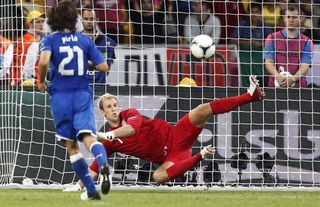
“Sometimes Andrea delighted too much in his own passing ability – I had to spank his ass”
Hjorring is a nondescript market town a few kilometres from the northern tip of Denmark, full of quaint redbrick-roofed houses seldom more than two storeys high. With the exception of a light entertainment revue festival, its most noteworthy event is the annual Dana Cup, which features 25,000 youth footballers from around the world, competing at age groups from under-12 upwards.
This is not a school trip. We’re here to win, so you’d better behave.
In 1992, Roberto Clerici took Voluntas U15s, an amateur side from Brescia in northern Italy, to the tournament. His captain, weighing just five stone, was a 13-year-old playing two years above his age group. Andrea Pirlo. “This is not a school trip,” Pirlo huffed at his team-mates. “We’re here to win, so you’d better behave.”
He led by example with his feet. To reach the semi-final, where they’d eventually be knocked out of the competition, Voluntas were taken to penalties. Pirlo took the decider. Win or bust.
“You could have heard a pin drop,” recalls Clerici. “He went towards the keeper with the ball under his arm. He took his run-up. He slowed down. He caressed it. Scooped it. We nearly dropped dead. Andrea is like that: even then you couldn’t tell him anything. He had the same look on his face as he did against England in Kiev at Euro 2012.”
After every Voluntas training session, Clerici held a penalty tournament “so as not to have a queue for the shower”. When a player missed, he went to get changed. The last one standing was always Pirlo.

“He was well aware of his ability,” Clerici, who still sees Pirlo regularly, tells FourFourTwo. “Sometimes he delighted too much in his own passing ability, and I had to spank his ass – good-naturedly, obviously! He never made many fouls, because he wanted to play football and didn’t want to stop the others from playing, either. He did the hardest things almost without ever making a mistake. Even though his family were comfortable, financially speaking, he didn’t need extra motivation, and that’s very important.”
Beginning on a family holiday to Tuscan seaside resort Viareggio as a four-year-old in 1983, football was everywhere in Pirlo’s childhood.
He was a calm, silent boy, but not introverted. He thought only of football.
“He played games on the sand with his brother Ivan and their friends, who were at least two years older,” recalled mother Lidia. "People stopped to watch him and said: ‘That kid is fantastic.’ He thought only of football. He was a calm, silent boy, but not introverted. He never hung around with bad company, partly because he stayed in the yard playing with Ivan until dinnertime. There was a bit of rivalry between them, but no jealousy.” Ivan went on to carve out a decent semi-pro career.
As children, the brothers would practise around the home with balls of wrapped-up stockings, Andrea insisting that his beloved Marvel action toy Big Jim played football, too.
With all that practice in the streets and corridors of Flero, a small village to the south of Brescia, it didn’t take long for Voluntas’ professional parent club to take an interest in young Pirlo. Meanwhile, a meeting was called at Brescia’s local rivals, as Atalanta aimed to poach the 14-year-old. Fearing a “diplomatic incident”, Atalanta president Antonio Percassi resolved: “He should be left in peace.”
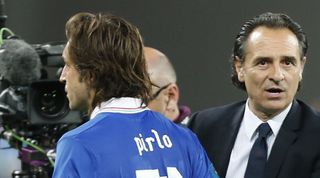
“He left me speechless; I’d never seen anything like it,” said Cesare Prandelli, then an Atalanta youth coach (and Pirlo’s future Italy boss). “I got the distinct impression that everyone was watching him and him alone, thinking the exact same thing: ‘This is the one. This is the new talent.’”
“Does this lad think he’s Maradona?”
Pirlo writes in his autobiography: “From an early age, I knew I was better than the others, and for that very reason tongues were soon wagging. Everyone talked about me, too much as a matter of fact, and not always in a good way.”
Matters came to a head in another youth team game for Brescia. Jealous at the newbie’s outrageous talent, his own team-mates refused to pass him the ball, their parents questioning from the stands with increasing volume: “Does this lad think he’s Maradona?” Pirlo’s father Luigi, unable to deal with the catcalls and the tears streaming down his son’s face, ran to the other side of the pitch to escape, and barely attended his matches for years hence.
Go and pick up that ball. Give it a stroke – it belongs to you. The jealous folks don’t deserve it.
Undeterred, Pirlo trusted his own talent and waltzed his way to a couple of goals. “Go and pick up that ball,” he told himself. “Give it a stroke – it belongs to you. The jealous folks don’t deserve it.”
He did at least have one influential fan at the club: first-team coach Mircea Lucescu. Within a year of joining Brescia, Pirlo was training with the senior pros and playing pre-season friendlies against the likes of Red Star Belgrade and Steaua Bucharest.
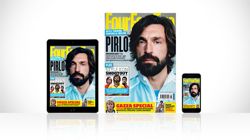
Lucescu had to quash an internal revolt among Brescia’s grizzled 30-year-olds as this cocky teenager dribbed past one of their number before going back for more, over and over again. Pirlo says that in the early days, there were up to “10 attempted murders” per training session.
“A few were jealous of him and afraid at losing their first-team place,” Lucescu’s Brescia assistant Adelio Moro, who went on to give Pirlo his senior debut in May 1995, tells FFT. “He was very calm, even though he was playing in a difficult role: attacking midfield. He was a real introvert, but he was very professional – an example to everyone. I wish more players were like him, not just technically speaking, but also as a human being.”

Marco Schenardi, the player substituted by Moro for Pirlo’s debut, has fond memories of the youngster’s early years at Brescia.
“He told me that for him it was a dream to take my place on the pitch,” Schenardi tells FFT. “He was very lucky to have a coach like Lucescu – he had the intuition that Andrea was a great player.
He seemed indolent – you didn’t bet too much on him to become a leader, but he became one through his talent.
“You could see he had great qualities, although you also saw this kid who seemed indolent and you didn’t bet too much on him for the future, despite his enormous quality. His character wasn’t the kind that made you think he could become a leader, but he had the fortune to become one through his talent.”
With the squad finally harmonious behind a 17-year-old Pirlo, Brescia won the 1996-97 Serie B title; the problem for the Little Swallows would be holding on to Andreino. “We’ll never have the money to buy a player like Pirlo,” admitted president Gino Corioni. “He will be our symbol. I’ll hold on to him for as long as I can if we stay in Serie A.”
“All I’m after is a few square metres to be myself”
One of Italy’s most notorious yo-yo clubs, Brescia were indeed relegated 12 months later. The vultures circled and in 1998 Inter, the club this impossibly excited teenager had supported as a child, won the race for the most coveted young signature in the country. Pirlo would be playing alongside Ronaldo, World Cup winner Youri Djorkaeff and childhood hero Roberto Baggio.
Nobody passed a football like him – certainly not in Italy, where freedom of artistic expression is limited to square-jawed centre-backs’ ingenious rule-bending (and Francesco Totti). Even then, as a genuine forward-thinking No.10, Pirlo knew his game. All the practice with Ivan, the grudging acceptance at Brescia and meaty challenges everywhere else had instilled in him the determination to find space and pass.
It’s called an assist and it’s my way of spreading happiness.
“I’m a bit of a wandering gypsy on the pitch,” he writes in his autobiography. “A midfielder continually on the lookout for an unspoilt corner where I can move freely, just for a moment. All I’m after is a few square metres to be myself. A space where I can continue to profess my creed: take the ball, give it to a team-mate, team-mate scores. It’s called an assist and it’s my way of spreading happiness.”
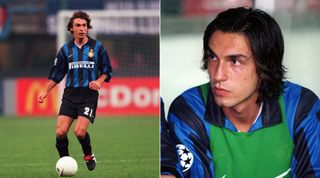
Despite lighting up Anfield in a pre-season friendly in August 1998 – “this boy has a rev counter in his head,” wrote Rome newspaper La Repubblica – happiness was in short supply at the Nerazzurri. President Massimo Moratti went through four coaches in a season: Gigi Simoni, Pirlo’s former coach Lucescu, Luciano Castellini and Roy Hodgson. Simoni and Lucescu played Pirlo regularly; the latter two, less so. The future England manager, Pirlo has claimed, even mispronounced his surname as Pirla, Italian for ‘dickhead’.
Get a free copy of the iPad or iPhone issue
The tale may be apocryphal, but it nevertheless gives an insight into his standing at the San Siro at the time. The following season, Pirlo’s future Italy boss Marcello Lippi sent Pirlo on loan to Reggina. It was here, in the hilly foot of Italy’s boot, that Pirlo first acclimatised to Serie A.
"I had to cut off the power to make Andrea go home"
“When we finished training, I had to cut off the power to make Andrea go home, or he’d have practised all night long!” then-Reggina coach Franco Colomba tells FFT.
“The first time I met him was before the third game of the season, against Bologna. He arrived in a Porsche and I told him: ‘Look, first of all, the roads up here aren’t that good. Second, nor is it a good idea for a 20-year-old kid to go around in a car like this.’ The next day he sent the car home!
“The first time I saw him smile, and it was only a hint of one, was when we were sure to avoid relegation. We thought: ‘So he is a human, too – he feels emotions!’”
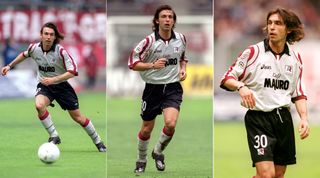
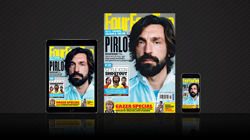
Fresh from captaining Italy to European Under-21 Championship glory (and winning both the Golden Boot and Golden Ball as the competition’s top scorer and best player), Pirlo returned to Inter in the summer of 2000 with Lippi convinced of his quality. Yet his would-be World Cup-winning manager lasted only one more league match, having lost in Champions League qualifying to Swedish outfit Helsingborg. Italy legend Marco Tardelli, who had been Pirlo’s U21 boss, replaced Lippi.
In his first six months at the San Siro, Tardelli played his former protégé in just four league games. He has since admitted he would “redo everything”.
“Perhaps he didn’t recognise me,” Pirlo later griped. “I lost count of the times I wanted to say to him: ‘You know where you can stick that roar that made you famous’ – but, being a well-mannered person, I stopped myself.”
"As regista, Pirlo made the ball sing"
By January, Pirlo had returned to Brescia on loan. It may only have lasted 10 league games, but his second spell with the Little Swallows would prove every bit as influential as the first under Lucescu and Moro.
At the beginning of the 2000-01 season, Brescia had signed a 33-year-old Roberto Baggio from Inter and as such already had their trequartista to feed prolific targetman Dario ‘The Bison’ Hubner.
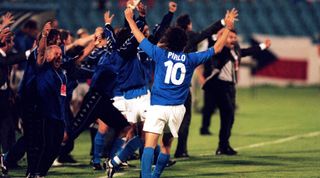
Determined to add Pirlo’s quality to his thin squad, coach Carlo Mazzone – one of the most experienced and tactically astute managers in Serie A history – resolved to play Pirlo as a regista: a master passer in front of the back four, there to conduct his orchestra. Andrea hadn’t even turned 21.
At trequartista, a lack of space could cancel out his technical quality, but as a deep-lying playmaker it was decidedly enhanced.
“At trequartista, a lack of space could cancel out his technical quality, but as a deep-lying playmaker it was decidedly enhanced,” Mazzone told the local press years later. “Here, Pirlo made the ball sing. And although he was so young, he had the manner of someone who knew where he wanted to go.
“I talked to the team about it, too, saying that from now on we had to have faith in Pirlo, who was the director of play. He didn’t need much convincing. I just told him the story of my other teams who played in this way.”
Trial offer: get 3 iPad or iPhone issues for £1
If one moment came to define Pirlo and Baggio in tandem, their respective generations’ supreme talents, it arrived 86 minutes into a trip to Juventus in April 2001. Pirlo picked up the ball inside the centre circle, nine Juve players standing between him and Edwin van der Sar’s goal, and with one pass to Baggio rendered them all helpless as the Divine Ponytail equalised.
“That was the day Pirlo the regista blossomed,” recalled Mazzone, who later inspired Pep Guardiola. “The whole squad used to laugh about my little discovery. Luckily, every so often someone remembers that.”
Sick of playing second Nerazzurri fiddle, in June 2001 Pirlo joined city rivals Milan for £9.6m….
To read the second half of this feature, in which Pirlo goes on to conquer the world...
EITHER Get a free copy of the iPad or iPhone issue
OR take our trial offer: 3 iPad or iPhone issues for £1.
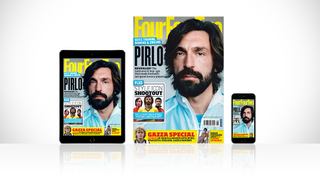
Andrew Murray is a freelance journalist, who regularly contributes to both the FourFourTwo magazine and website. Formerly a senior staff writer at FFT and a fluent Spanish speaker, he has interviewed major names such as Virgil van Dijk, Mohamed Salah, Sergio Aguero and Xavi. He was also named PPA New Consumer Journalist of the Year 2015.

'Because of the way that the rules are structured, no one can afford Alexander Isak. Newcastle United wouldn't even entertain £150m - because they couldn't replace him': Toon legend Alan Shearer explains why striker is SO valuable to Magpies

Manchester United hesitance could mean they lose £42m target to Premier League rival: report
Most Popular
